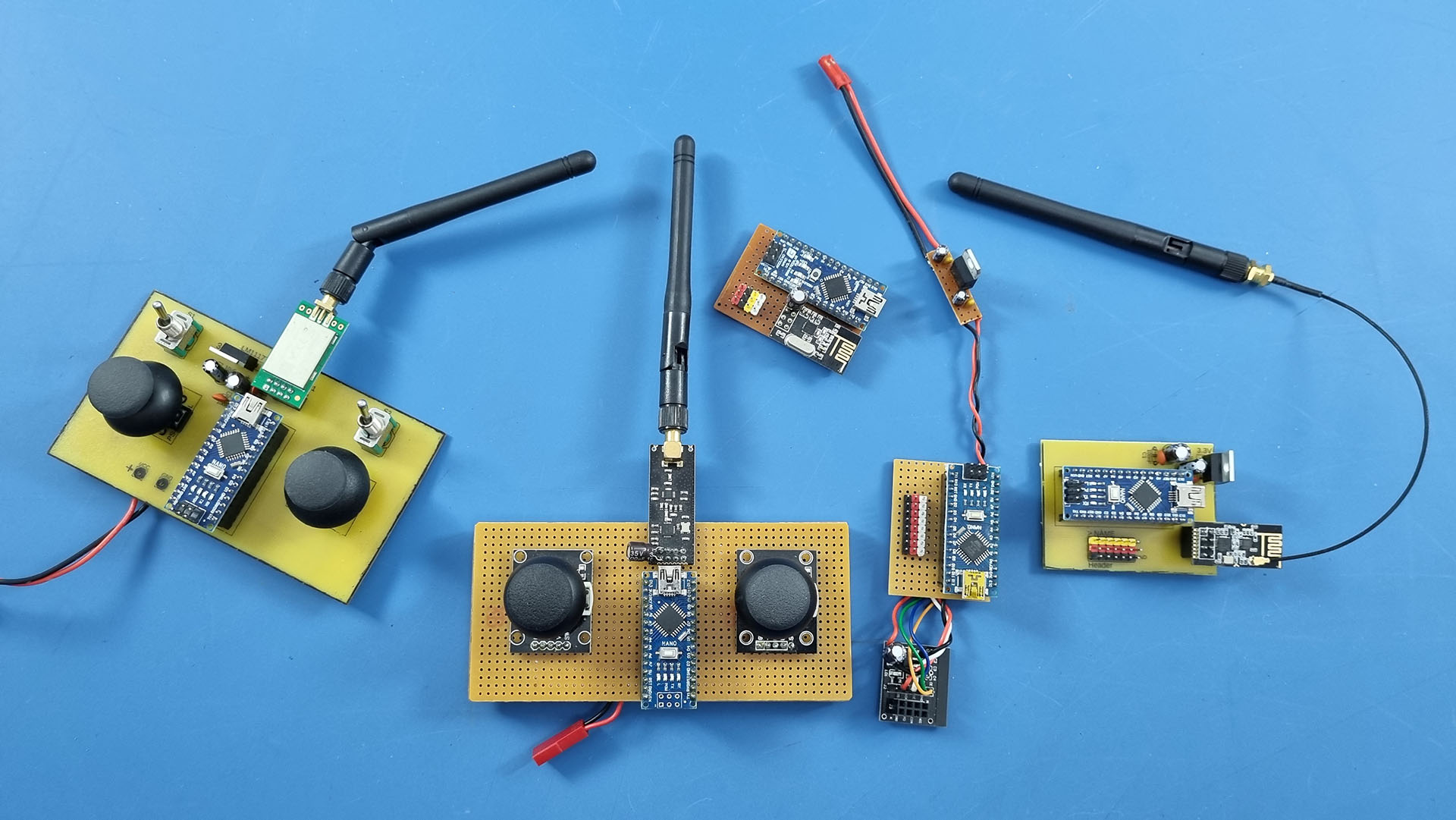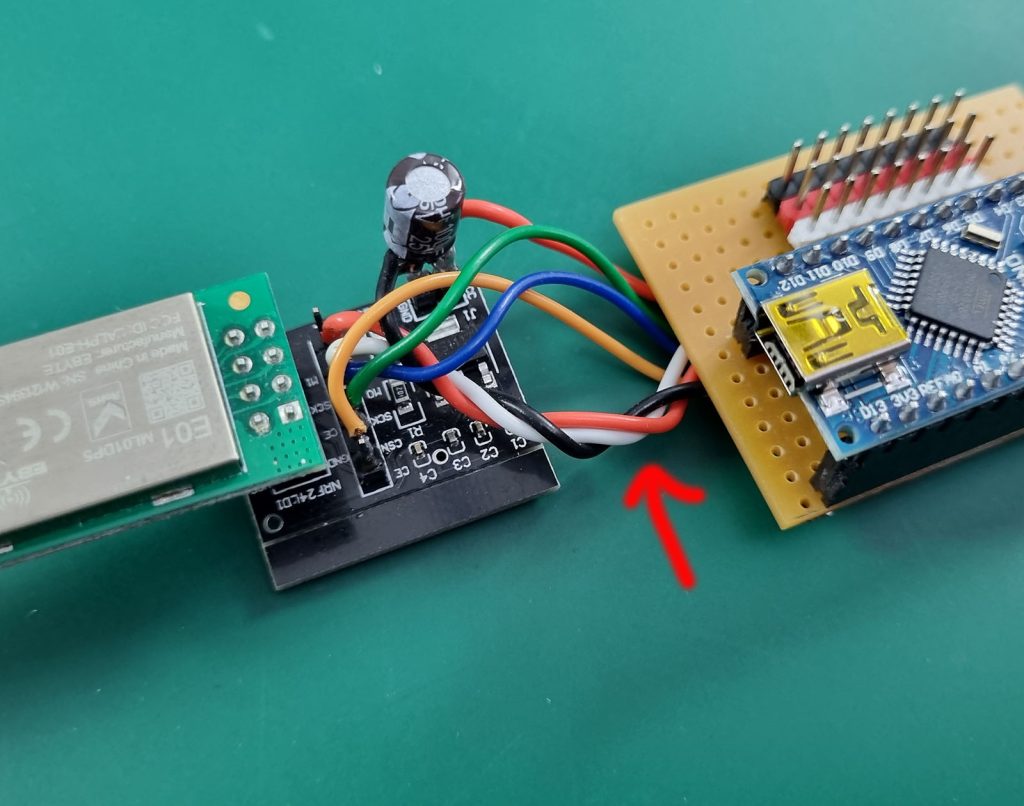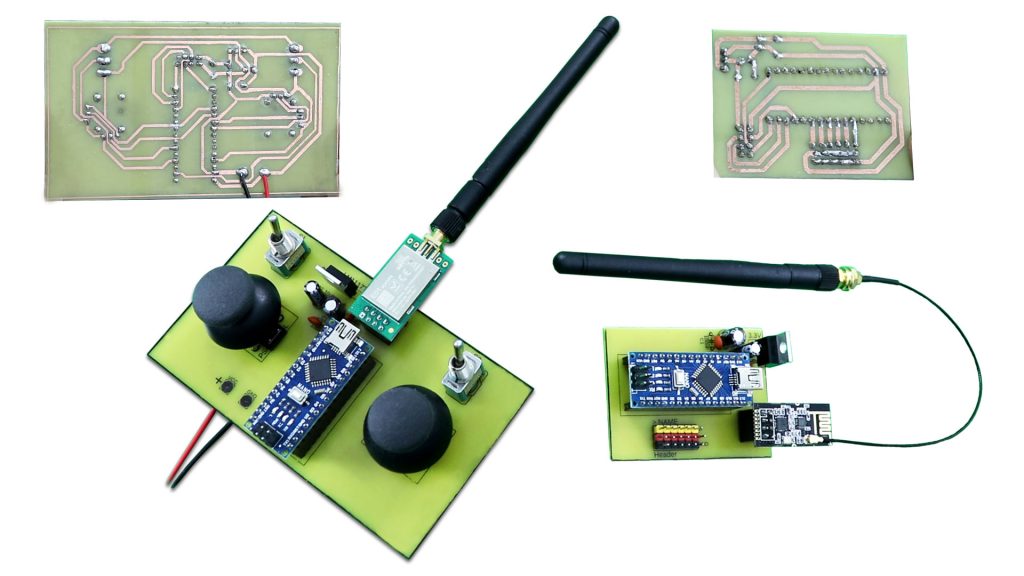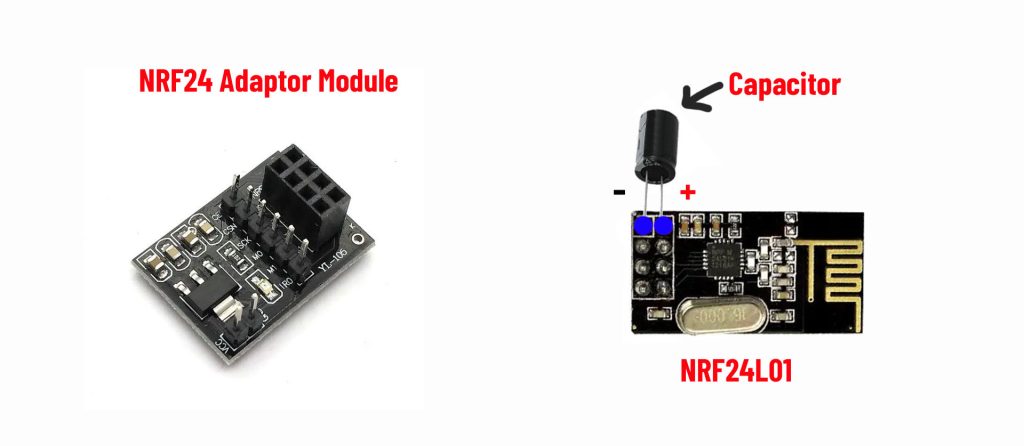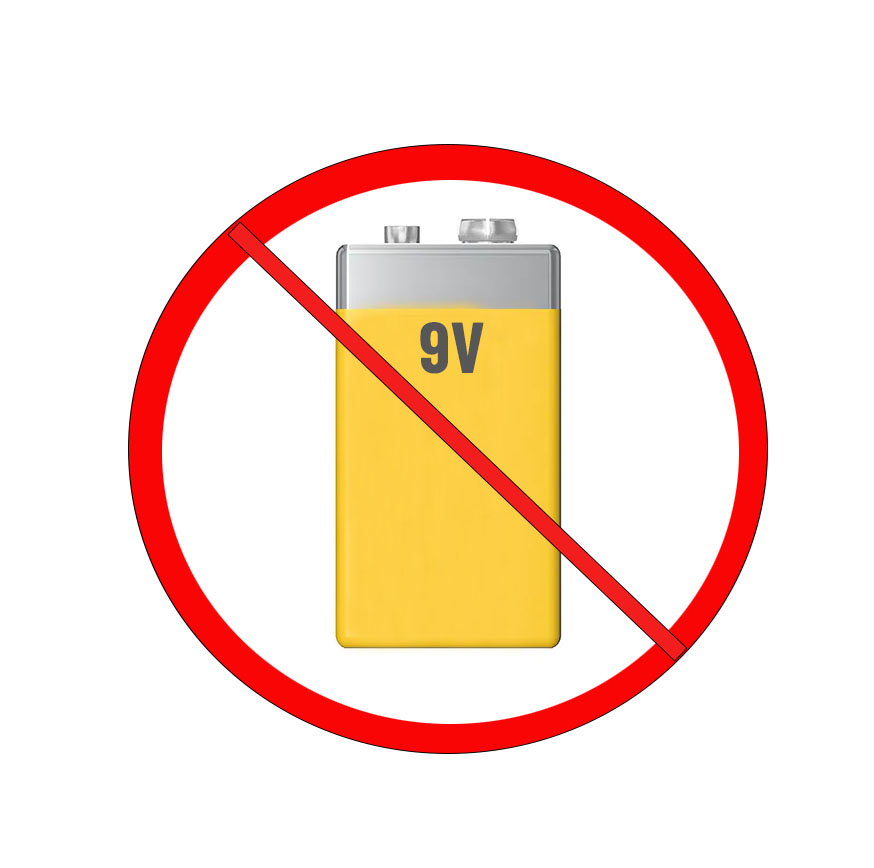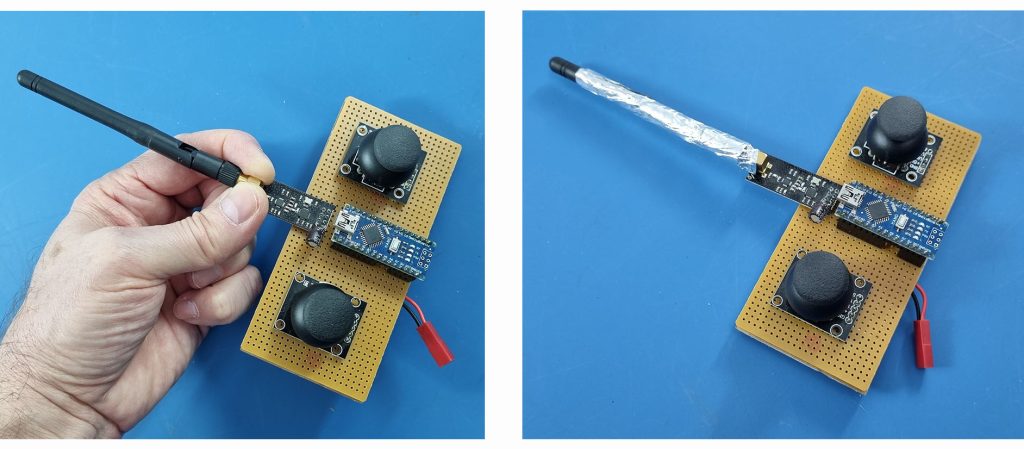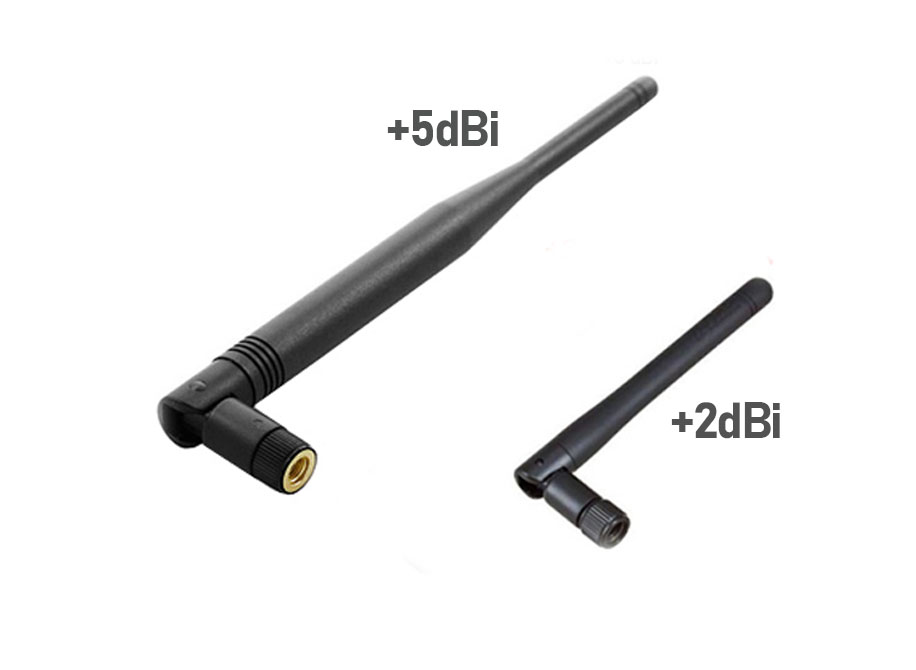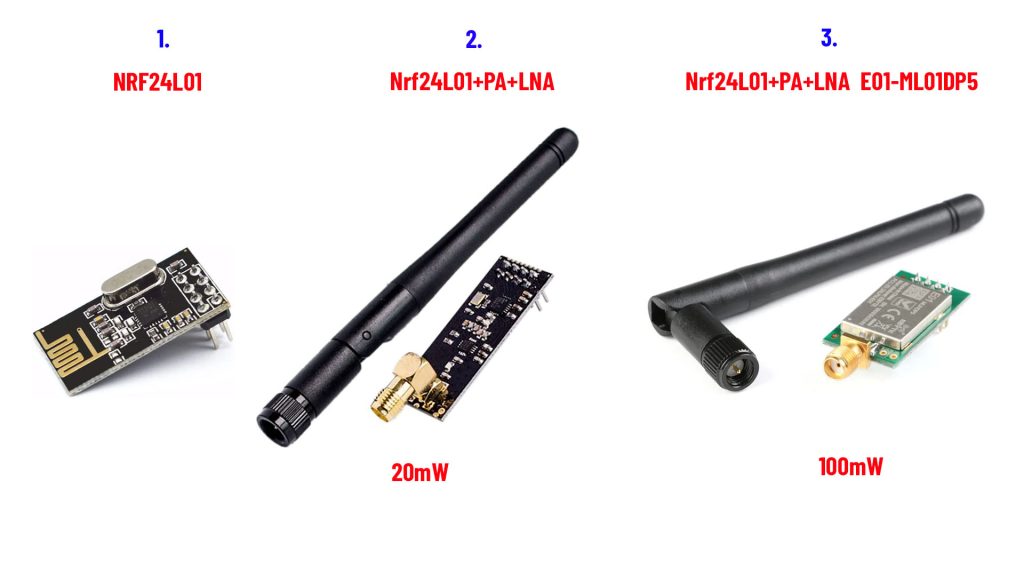| What are the possible malfunction problems of remote control circuits made with Arduino and NRF24L01 modules, and how can they be solved? |
|---|
| First of all, you must make sure that you have assembled the circuit correctly and completely. If you are sure of this, the following topics may be useful for your solution.
Usually, the problem is caused by the NRF24L01 modules not being able to connect with each other. Things to consider to reduce electrical noise (interference): The cables you use to assemble electronic components should be as short as possible. Excessively long cables increase electrical noise.
|
| It is very important that the NRF24 module is supplied with stable and correct voltage. These modules operate with 3.3V. Arduino’s 3.3V pin output does not provide sufficient current power. Therefore, it is necessary to apply the following solutions; An external NRF24 adapter module can be used. This module is a voltage regulator (Not a range extender). It ensures stable and sufficient power reaches the NRF24 module. Off-the-shelf NRF24 power modules can be used, or you can add an internal voltage regulator circuit to your circuit. Both do the same task. Another option is to solder an electrolytic capacitor to the positive and negative pins of the NRF24 module. Usually 10uf to 100uF (16V or above) is sufficient. Even if NRF24 modules are used with the adapter module produced for them, it may be useful to solder a capacitor to the positive and negative pins of NRF24. |
The batteries you use to power the circuits are also important. For example, 9V batteries are not suitable for NRF24 modules. They are inefficient because their current power is very low. And they can cause connection problems. 7.4V LiPo or Li-ion batteries or quality AA batteries (5xAA or 6XAA) should be used for the transmitter. Insufficient power supply may cause no connection to be established. |
| Environmental impacts; Connection problems can sometimes be external. Devices operating with 2.4Ghz frequency in your area may cause noise and prevent the connection from being established. It may be necessary to try running it in a different location.
Adding the following line to your code to change the frequency subchannel may help resolve connection issues EXAMPLE; radio.begin(); |
| Other interesting solutions: Connection problems may sometimes be caused by antenna inadequacy. It may be useful to hold the metal mounting part of the antenna with two fingers to ensure the initial connection. The human body acts as a kind of antenna amplifier. An interesting but useful method that can be applied to antennas is to wrap them with aluminum foil.
|
| NRF24L01 modules have versions with different power.
1. This version is very weak. Its range is very short and there are more connection problems. (The stable range I achieved in my tests is approximately 70-80 meters from Ground to Air) NOTE: If your circuit still does not work even though you have implemented all of these correctly and completely, one of the NRF24 modules you have may be defective. This possibility should also be considered. |

